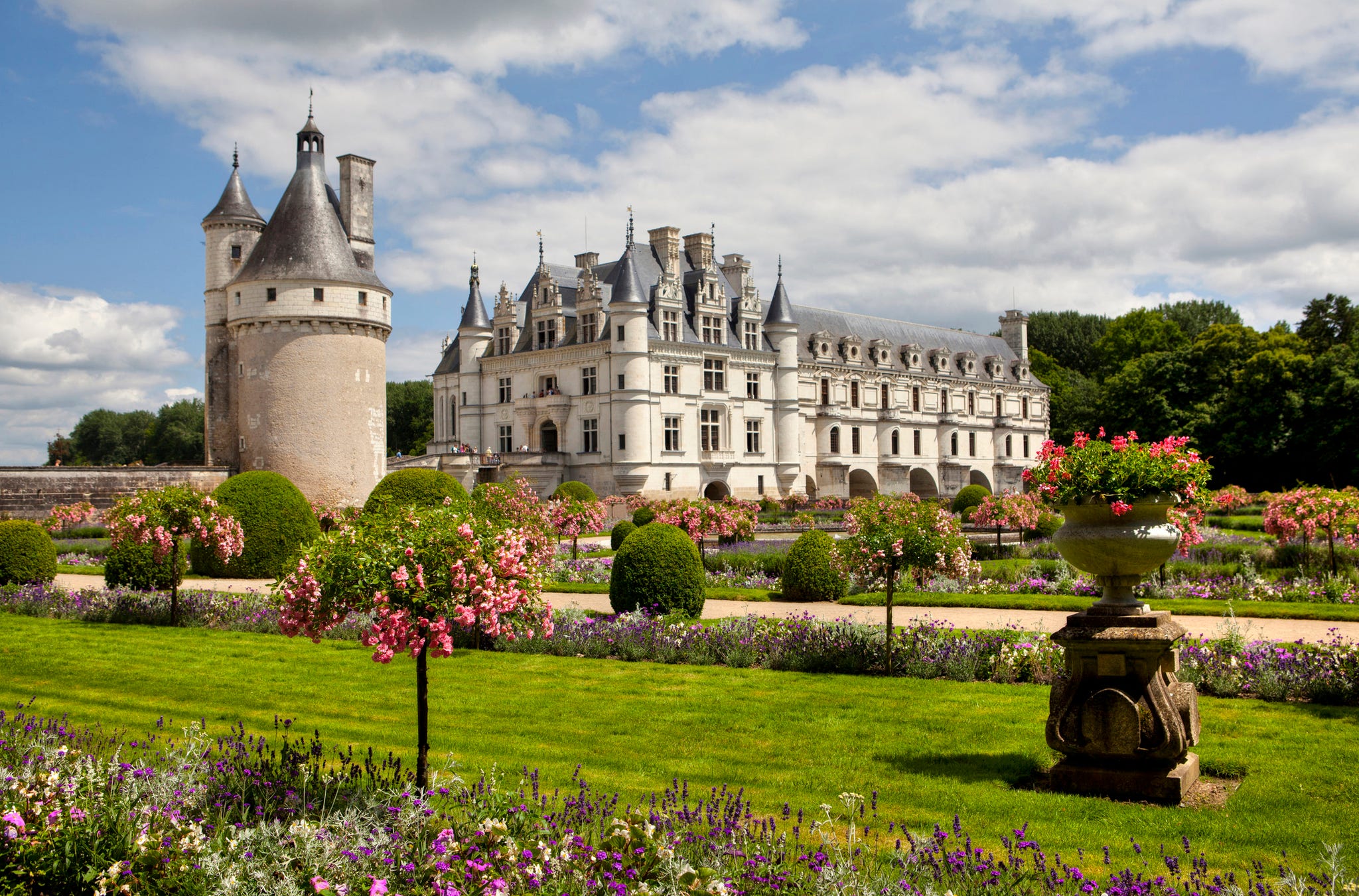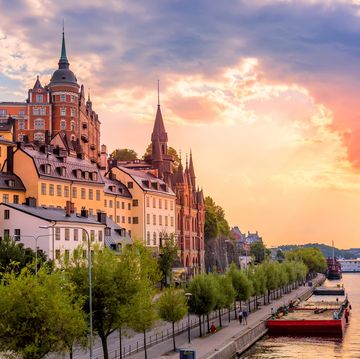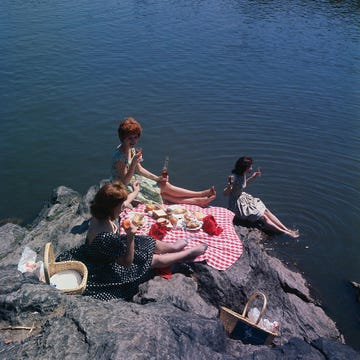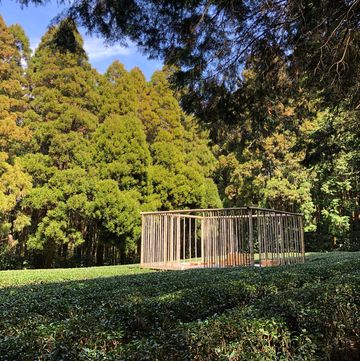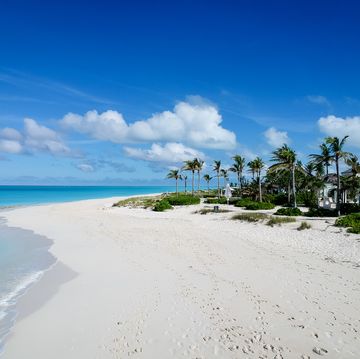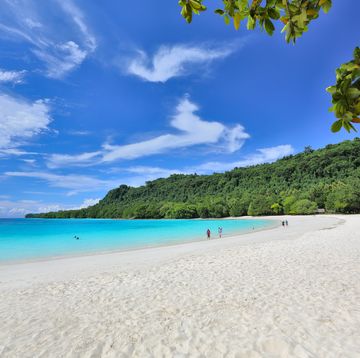These Are the 22 Most Enchanting Castles in the World
Get ready to live out those childhood fairy-tale fantasies.
Evoking legends, lore, and full-blown fantasy, castles possess a certain magic that draws in modern travelers. The soaring structures and bountiful gardens of royal dwellings allow us to revisit those worlds of our childhood bedtime stories. Even more so, the world's royal residences play a compelling role in telling the rich history of a place, its people, and its craft.
Their fabled halls give insight into the triumphs (and tragedies) of their rulers while the intricate frescoes and tiles decorating the grand banquet rooms honor the greatest artists of that time. The tall turrets give in-depth architectural lessons on the ornate styles that reigned during that time and beyond. And one cannot overlook the eclectic fabrics and furnishings preserved over centuries, which still can be found in many of the palaces' original meeting rooms. Simply put, castles serve as palatial time machines allowing guests an extravagant glimpse into the past.
From a Danish palace rebuilt after a devastating fire to a Japanese fortress that echoes the beauty of nature, these enchanting estates hold bountiful tales to fill up volumes of storybooks. Below, the 22 most beautiful castles in the world that will leave you full-heartedly believing in “happily ever after.”
Alhambra in Granada, Spain
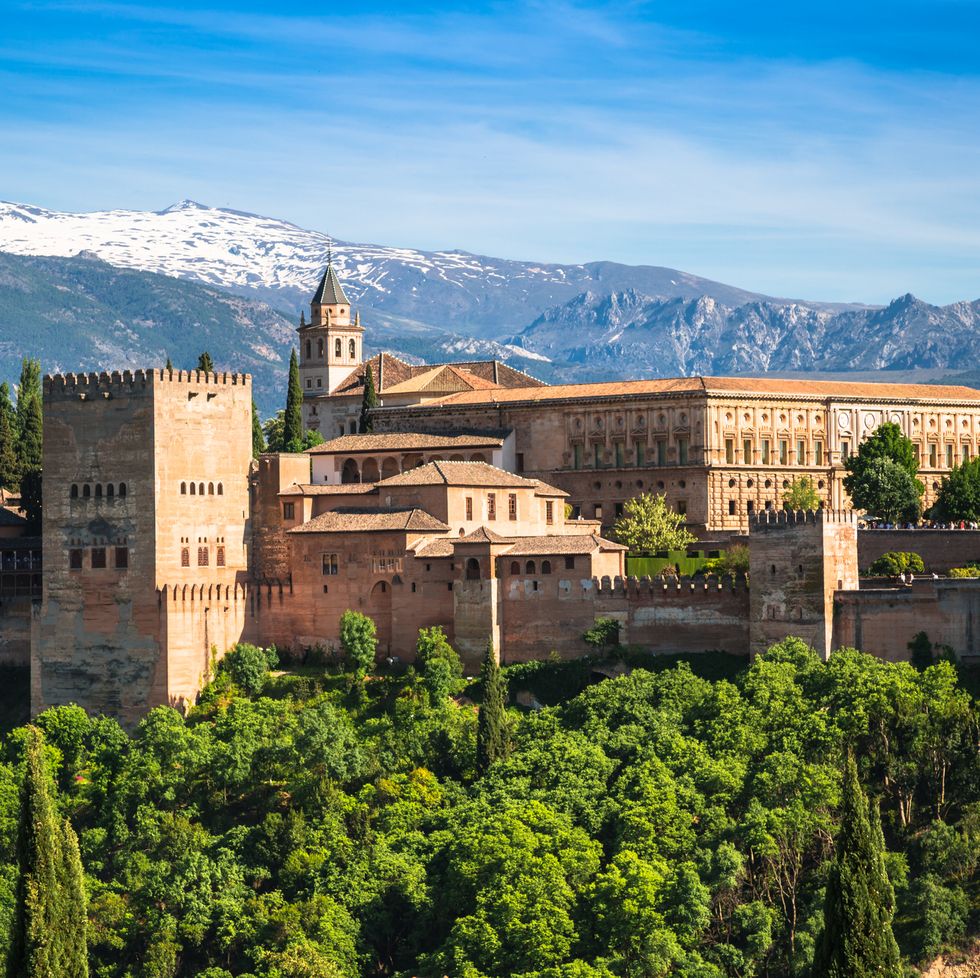
The Alhambra sits high above the city of Granada as a symbol of Spain's rich history. Ibn al-Aḥmar, the founder of the Naṣrid dynasty, first commissioned the hilltop palace and fortress in 1238. As different leaders came to power, the Moorish complex grew to include three distinct areas: a quarter for the royal family, a military base, and a quarter for the court officials.
During his reign, Charles I ordered the destruction of areas in the palace in an effort to build more Renaissance-style structures. However, guests can still see the original Moorish tile work and architecture in the restored Naṣrid buildings throughout the complex.
Castillo San Felipe del Morro in San Juan, Puerto Rico
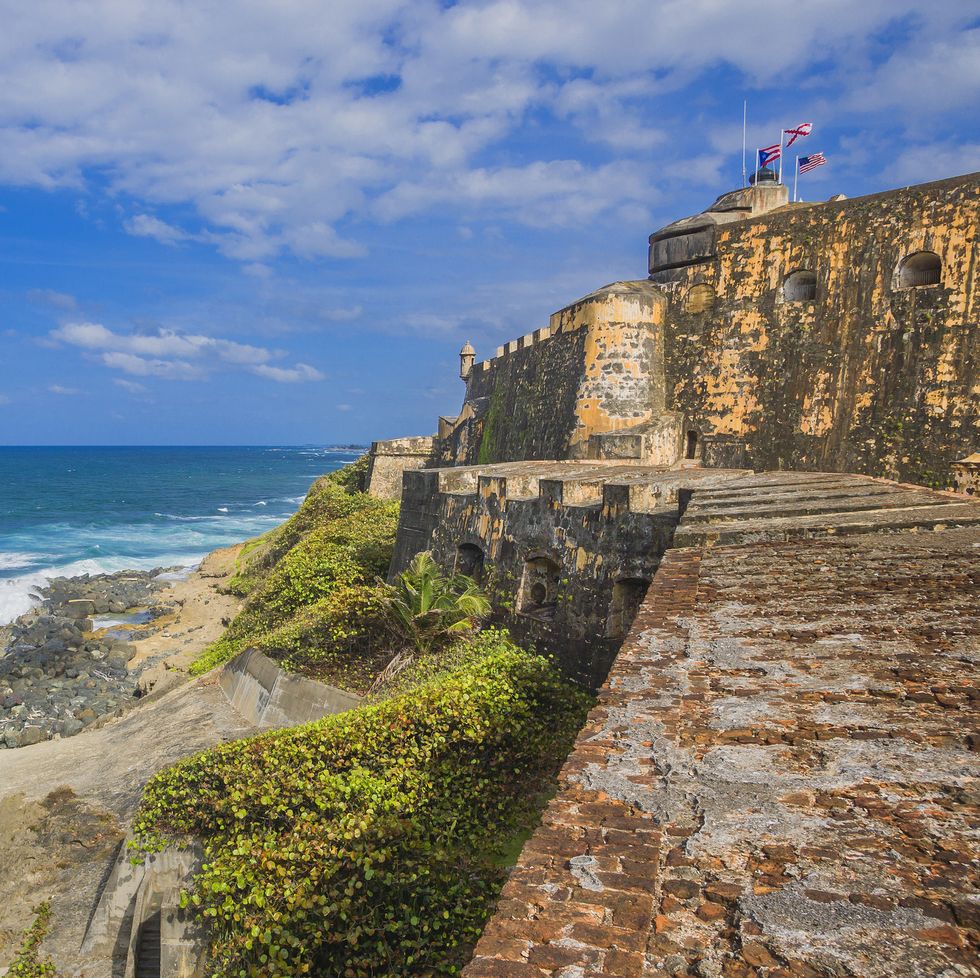
Construction for Castillo San Felipe del Morro, also known as El Morro, took nearly 250 years to complete. The Spanish began building the fort in 1539 at the very top of Old San Juan. The six levels of the fortress were strategically designed to give inhabitants an advantage over any enemy ships coming to the harbor. By the time it was completed in 1790, El Morro was already given the reputation of being unconquerable, winning numerous attacks—including one from Sir Francis Drake in 1595 and a 1625 invasion from the Dutch. The fort was never defeated.
Today, the fort is considered a World Heritage Site, and the National Park Service established it as a museum
Château de Chenonceau in Chenonceaux, France
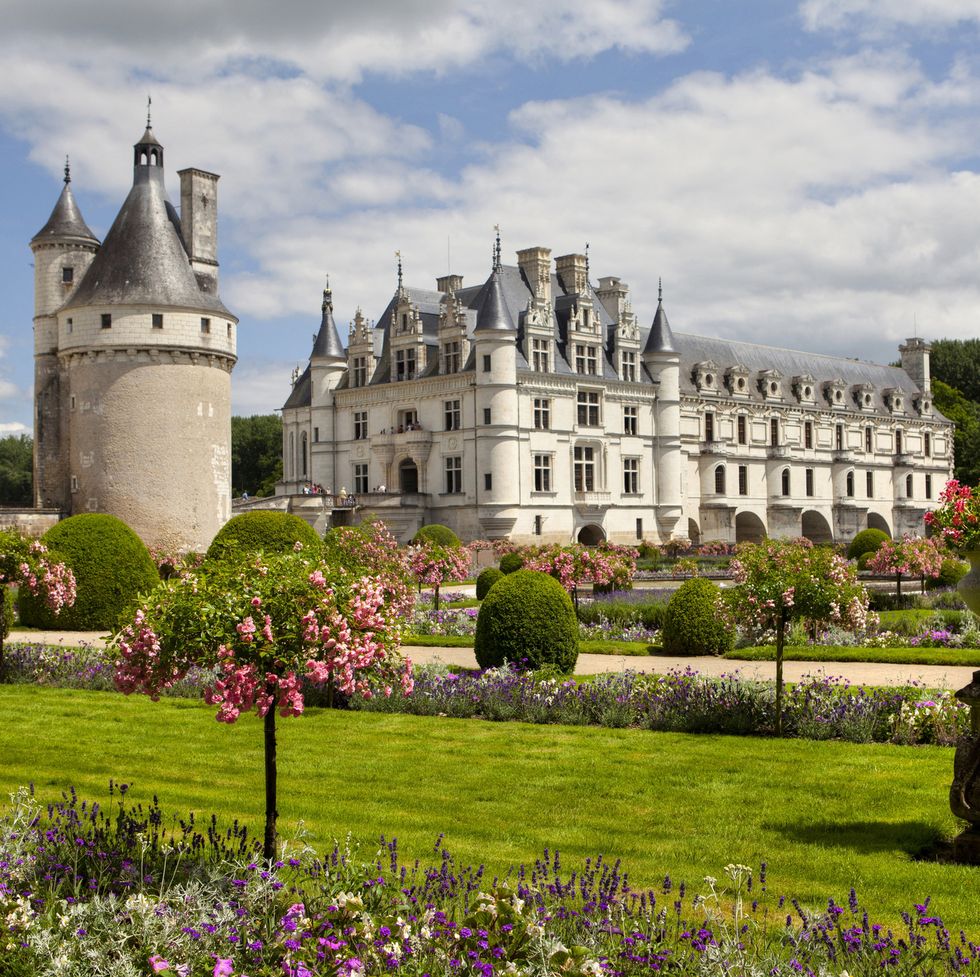
Surrounded by manicured formal gardens, Château de Chenonceau appears as though it’s elegantly floating over the reflective Cher River. The original structure can be traced back to the 11th century, but it was Diane de Poitiers, the mistress of Henry II, who commissioned Philibert de L'Orme to build the castle’s hallmark feature, the arched bridge, in the 16th century.
From one powerful woman to another, Catherine de' Medici made Chenonceau her favorite residence after the death of the king in 1559. There was never a night when the French queen wasn’t dazzling guests within the castle walls with her Grand Gallery and impeccable hosting skills. It’s even believed the first-ever fireworks display in France was held on the grounds to celebrate the ascension of her son Francis II to the throne.
The château suffered extreme damage during World War II, after the occupation of German troops and the Allies bombed its chapel. In 1951, the Menier family tapped architect Bernard Voisin to return the gardens and structure to their majestic state.
Peleș Castle in Sinaia, Romania
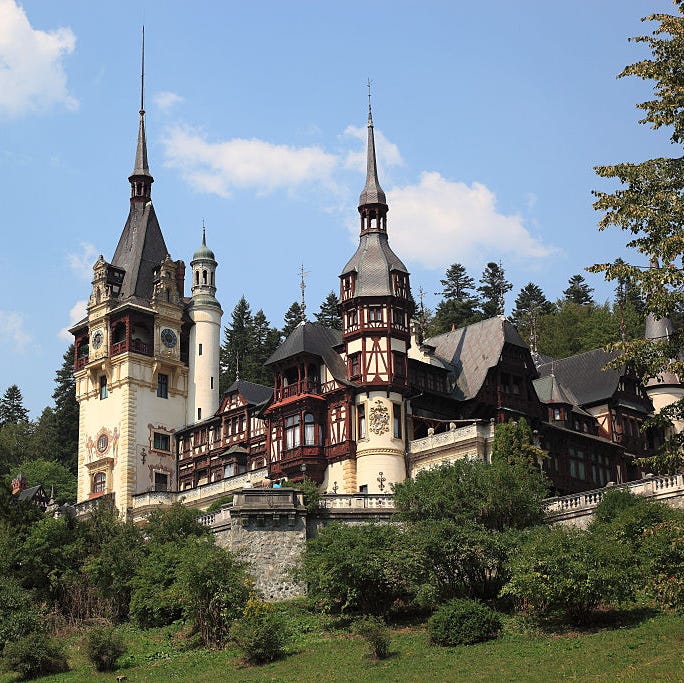
Taken by the enchanting Bucegi Mountains, King Carol I commissioned the construction of a neo-Renaissance-style castle in the quaint village of Sinaia during the 1860s. The royal summer house contains 160 rooms, all of which have a distinctive theme. For example, the theater on the grounds asserts a storybook feeling with exquisite frescoes by Austrian artists Gustav Klimt and Franz von Matsch climbing the walls and ceiling.
After years of serving as a royal residence, Peleș Castle eventually was abandoned when Romania fell under Communist rule. The castle reopened as a public museum after the revolution in 1989.
Chapultepec Castle in Mexico City, Mexico

Mexico City's Chapultepec Castle is the only castle within North America to ever house actual sovereigns. Viceroy Bernardo de Gálvez ordered the construction of the fortress in 1785 to serve as the home for the commander in chief of the Spanish colony, New Spain.
Years after the Mexican War of Independence, the regal structure was repurposed as a military academy and later became the site of the Battle of Chapultepec during the Mexican-American War in 1847. Eventually, it would once again act as an official royal residence for Emperor Maximilian I and his wife, Empress Carlota. Maximilian helped devise the castle's current floorplan and neoclassical style, but his reign was cut short in 1867 when President Benito Juárez regained power.
Today, the castle holds the National Museum of History, which educates locals about the country's cultures and history.
Qaitbay Fort in Alexandria, Egypt
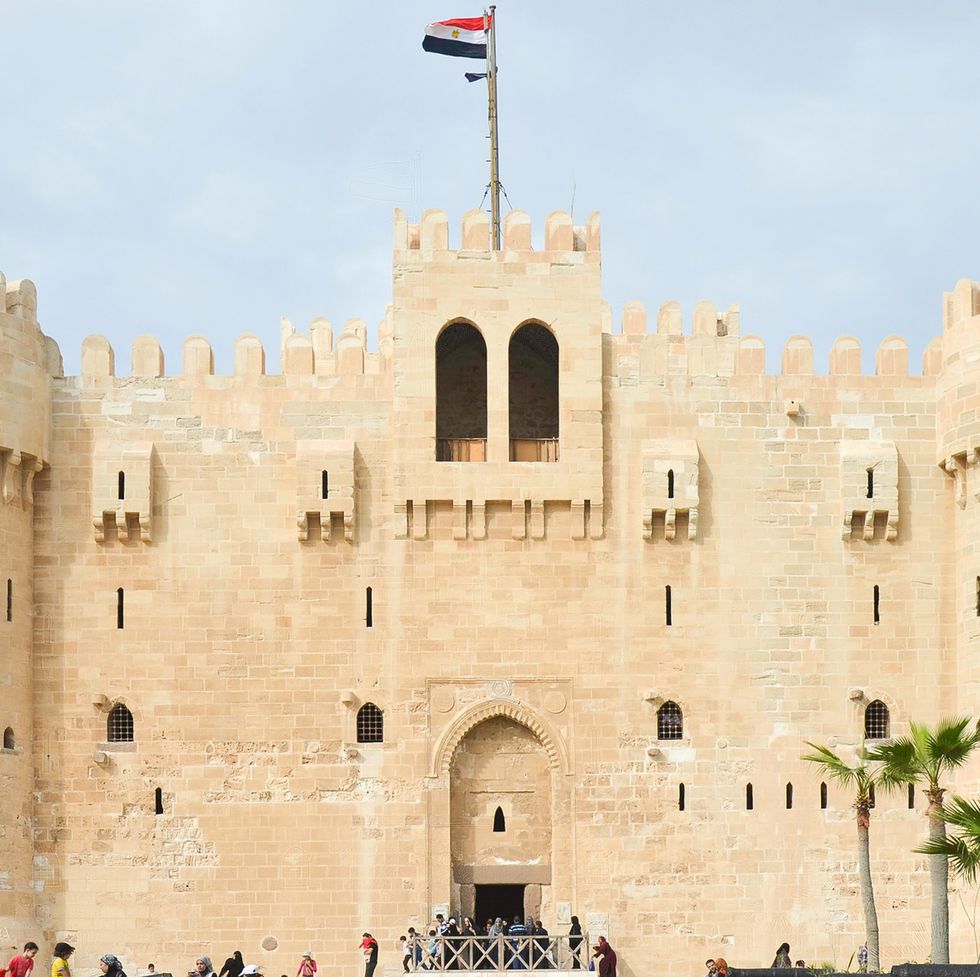
Construction of this austere fortress on the Mediterranean Sea began in 1477 after Sultan Al-Ashraf Qaitbay learned of Ottoman troops advancing toward Alexandria. The castle plans were cleverly laid out on the ruins of the fallen Pharos Lighthouse, where workers could salvage pieces of the previous structure to build red granite columns in the mosque and entrance.
Eventually, the Ottoman Empire captured Egypt, but the citadel still functioned as a military fort until the British bombardment of 1882. The imposing and stunning structure was left neglected on the harbor until the 20th century, when the Egyptian Supreme Council of Antiquities stepped in to rebuild it to its original glory.
Since the revolution of 1952, the citadel has functioned as a maritime museum, detailing the victories and losses of Egyptian naval troops.
Matsumoto Castle in Matsumoto, Japan

The origins of Matsumoto Castle date back to 1504, when the Ogasawara clan started to build a fort to fend off invaders. Only a few years after its completion, the military fortification was captured by the powerful warlord Takeda Shingen. As the castle switched hands throughout history, its design evolved into a tall three-towered structure with inky black walls and roofs that earned it the nickname the “Crow Castle.”
Around 1872, the castle faced possible demolition as developers wanted to build newer buildings and housing complexes on the site. However, the residents of Matsumoto started a campaign to save the building and eventually, the city government acquired it.
Fast-forward to today, Matsumoto Castle has officially been named a national treasure of Japan and one of the last standing examples of a daimyo castle.
Bojnice Castle in Bojnice, Slovakia
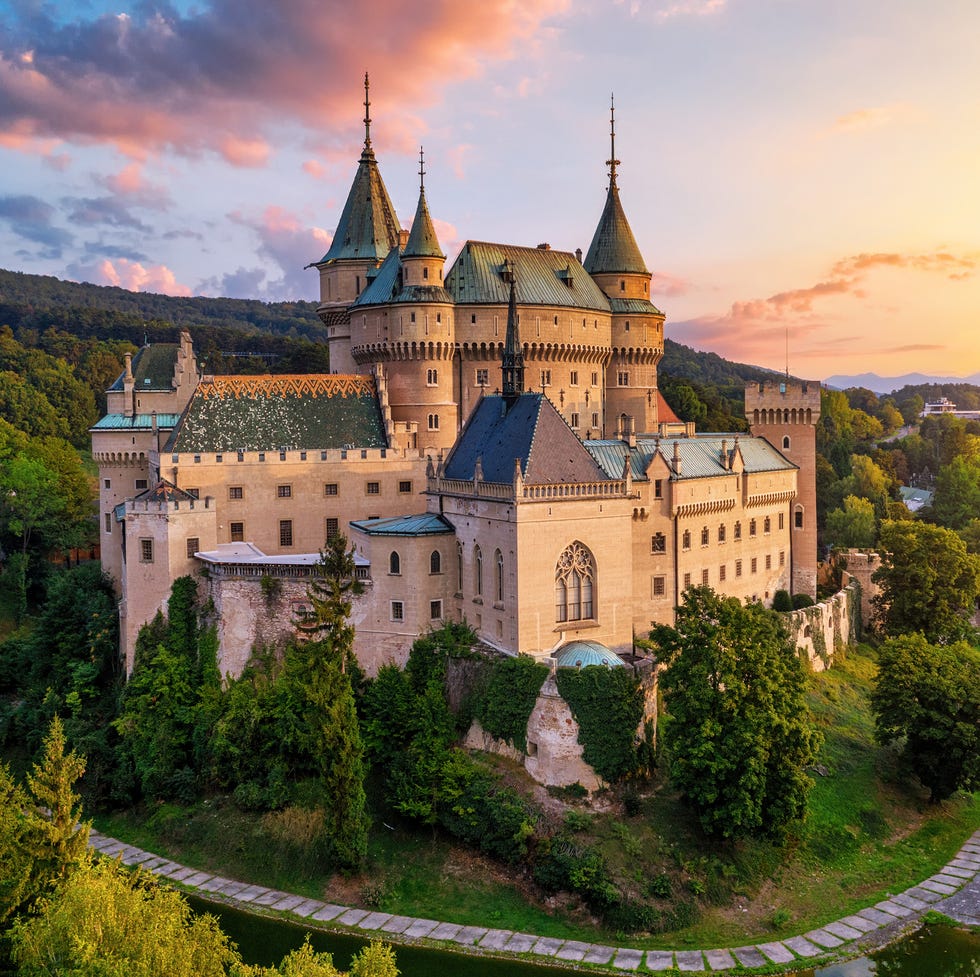
According to written records found at the Zobor Abbey, this Romanesque castle might have first been built as a wooden fort as early as 1113. Stone slowly began to replace the wood, and by the 16th century, the Gothic castle boasted Renaissance elements.
While he might not have been the first owner of the fortress, King Matthias Corvinus of Hungary might have been one of the first to invest in its future. The ruler would often come to the small city to work on his decrees and dictate them under a linden tree on the grounds that now bears his name.
It seems construction never ceased, as owner after owner continued to renovate the exteriors or add rooms until the castle ultimately landed in the hands of Count Ján Pálfi. Taken by the romantic castles of France's Loire Valley, the aristocrat sought to create his own fairy-tale castle filled with his impeccable collection of antiques, tapestries, and artwork. With its enchanting appearance, Bojnice Castle has become one of the most visited castles in central Europe, with thousands of guests exploring its hallowed halls each year.
Fasil Ghebbi in Gondar, Ethiopia
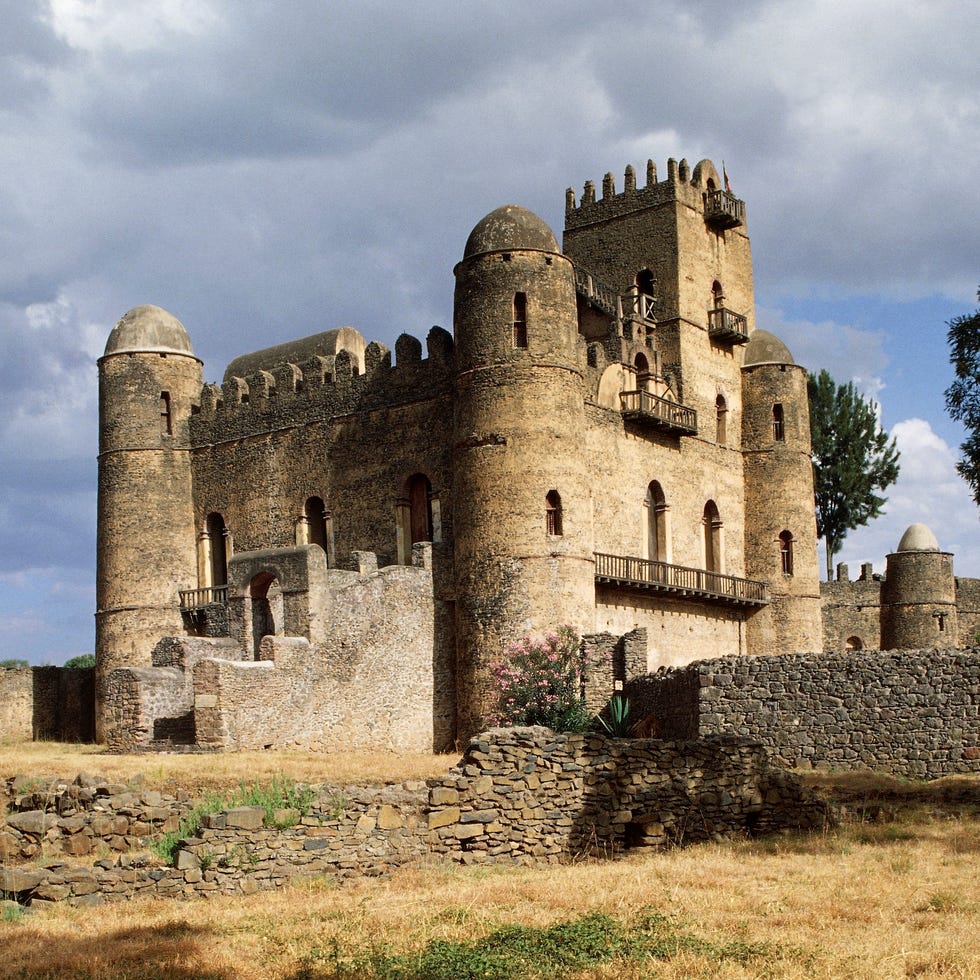
Emperor Fasilides commanded the construction of the imposing fortress-city in 1636 after he broke from tradition and founded the new capital city of Gondar. Previously, Ethiopian emperors would travel through the territories of the country, living off the food offered by locals and staying in tents. From its inception, Fasil Ghebbi stood as a symbol of change in Ethiopia.
Situated on top of a high plateau, the castle complex consisted of living quarters for the royal family and a series of gardens, temples, libraries, and even a swimming pool. Each ruler after Fasilides continued to enlarge the medieval-style fortress, but it was Fasilides’s grandson Emperor Iyasu the Great who filled the palace with the ivory sculptures and gem-encrusted ceilings often referenced in archival documents.
Fasil Ghebbi saw much damage throughout the centuries because of an earthquake and attacks by foreign troops. After damage from British air raids during World War II and conflicts with Somalia and Sudan, the castle complex fell into disrepair for many years. Eventually, it made its way on to the UNESCO World Heritage List in 1979 and was restored to the prominent attraction it is today.
Nakhal Fort in Nakhal, Oman
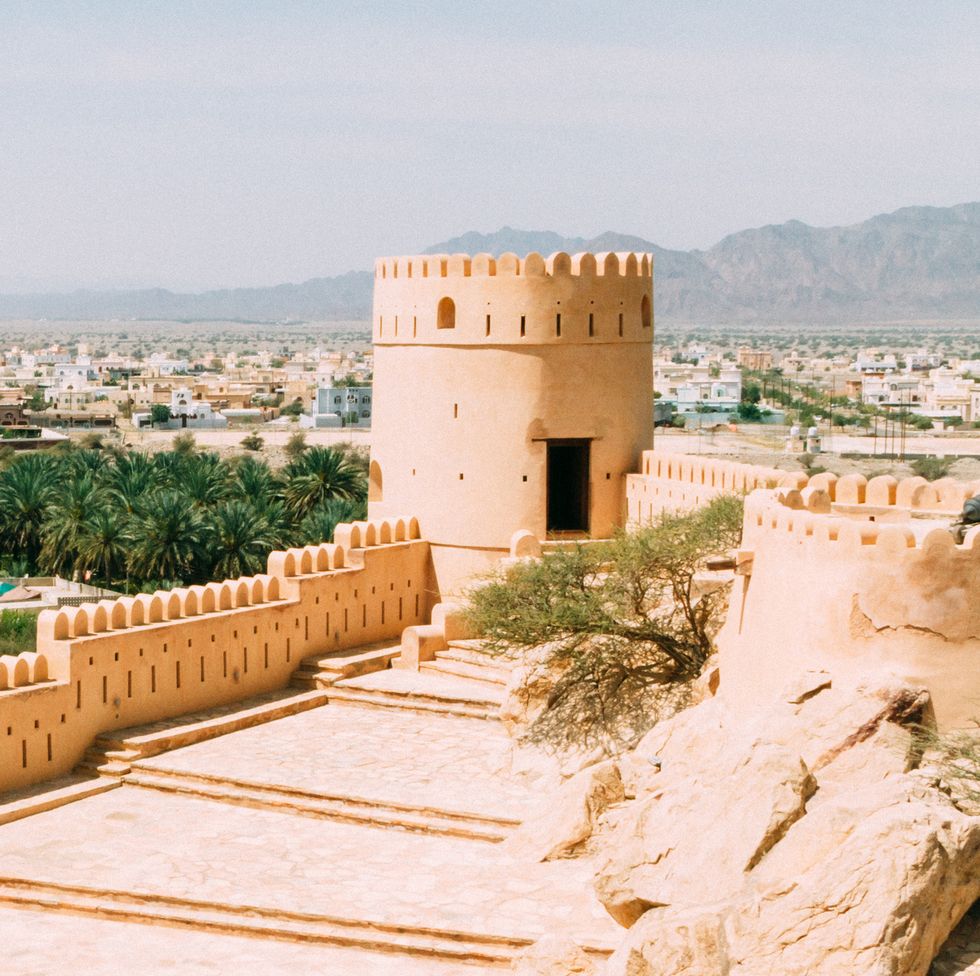
Upon first glance at the magnificent fortress above Oman's Al-Batinah plain, you might notice its rather irregular shape. The original structure of Nakhal Fort, which predates the Islamic era, was built around a large boulder at the foot of Mount Nakhal, causing it to look a bit imperfect.
The fort was built as a way to protect nearby trade routes from any looters or attacks and grew to include a mosque, residential spaces, and reception halls. Not to be overlooked are the odder additions like the hidden nooks where soldiers would dump hot date juice on invaders.
Most days the fort operates as a museum with historic artifacts, but if you happen to visit on a Friday, then you’ll be greeted by friendly goats at the weekly market held within its walls.
Red Fort in Delhi, India
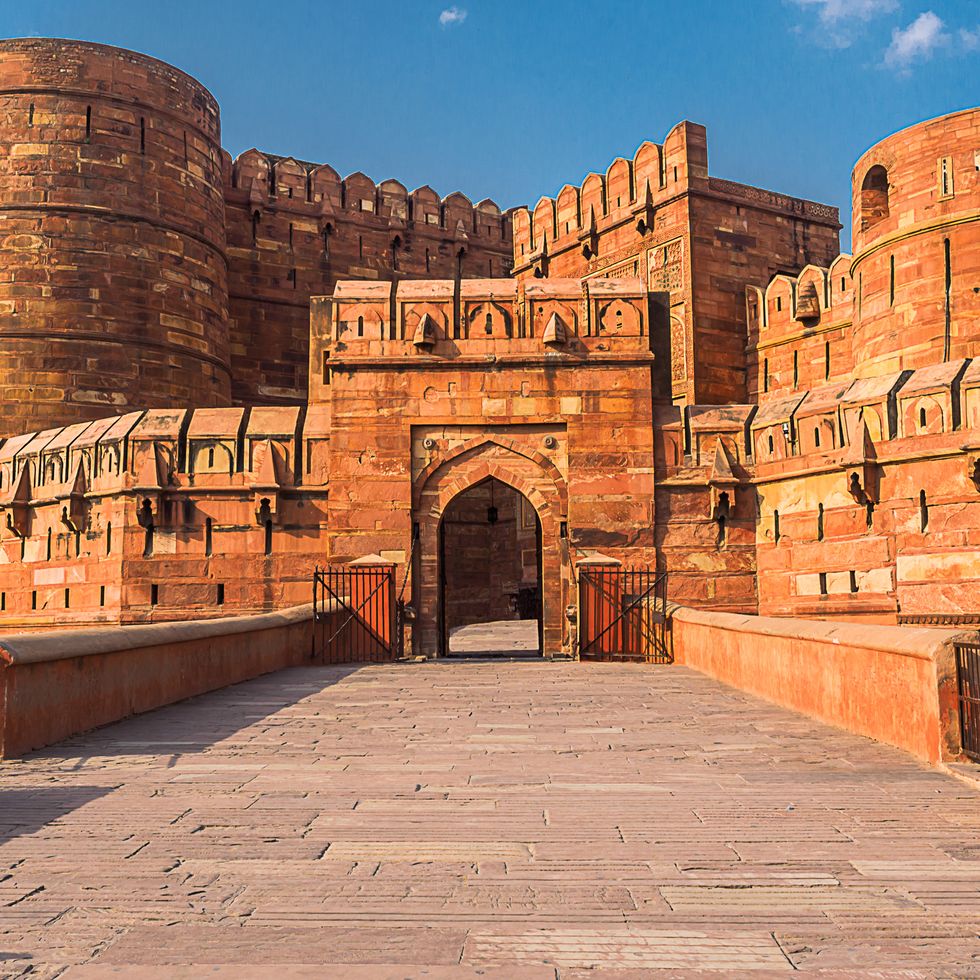
Mughal Emperor Shah Jahan laid the foundation of Red Fort, or Lal Qila, after moving the empire’s capital from Agra to the newly built city of Delhi. Behind the rather modest red sandstone façade lay an intricate web of inlaid-paneled halls and chambers mixing traditional Mughal style with elements of Persian, Timurid, and Hindu design.
Red Fort remained the official seat of the Mughal Empire until the Indian Rebellion of 1857, when countless precious gems housed within its walls were stolen and Bahadur Shah II was forced out of power. However, it would serve an important role in India gaining its independence from British rule, as it was the landmark where Jawaharlal Nehru, the first prime minister, would deliver his “Tryst with Destiny” speech.
Every year on India’s Independence Day, the current prime minister delivers a speech from the ramparts of Red Fort, highlighting its national importance.
Château de Chambord in Chambord, France

A magnificent display of French Renaissance architecture, Château de Chambord boasts more than 400 rooms, 280 fireplaces, and 80 staircases and a decorative moat, making it one of the most captivating structures built by the French monarchy.
King François I began construction on the grand château in the Loire Valley as a weekend hunting retreat in 1519. Enthralled with the astonishing work of Leonardo da Vinci, François insisted elements of the castle, such as the double helix staircase, be directly inspired by the Italian polymath.
Francois ultimately found the monumental residence to be too elaborate and stayed there for only a few weeks throughout his reign. The castle rather served as a symbol of the French monarchy’s power and lasting influence.
Château de Chambord hosts several events throughout the year for visitors to discover the history of the Renaissance marvel including during the holiday season, when it is decorated with thousands of lights.
Pena National Palace in Sintra, Portugal
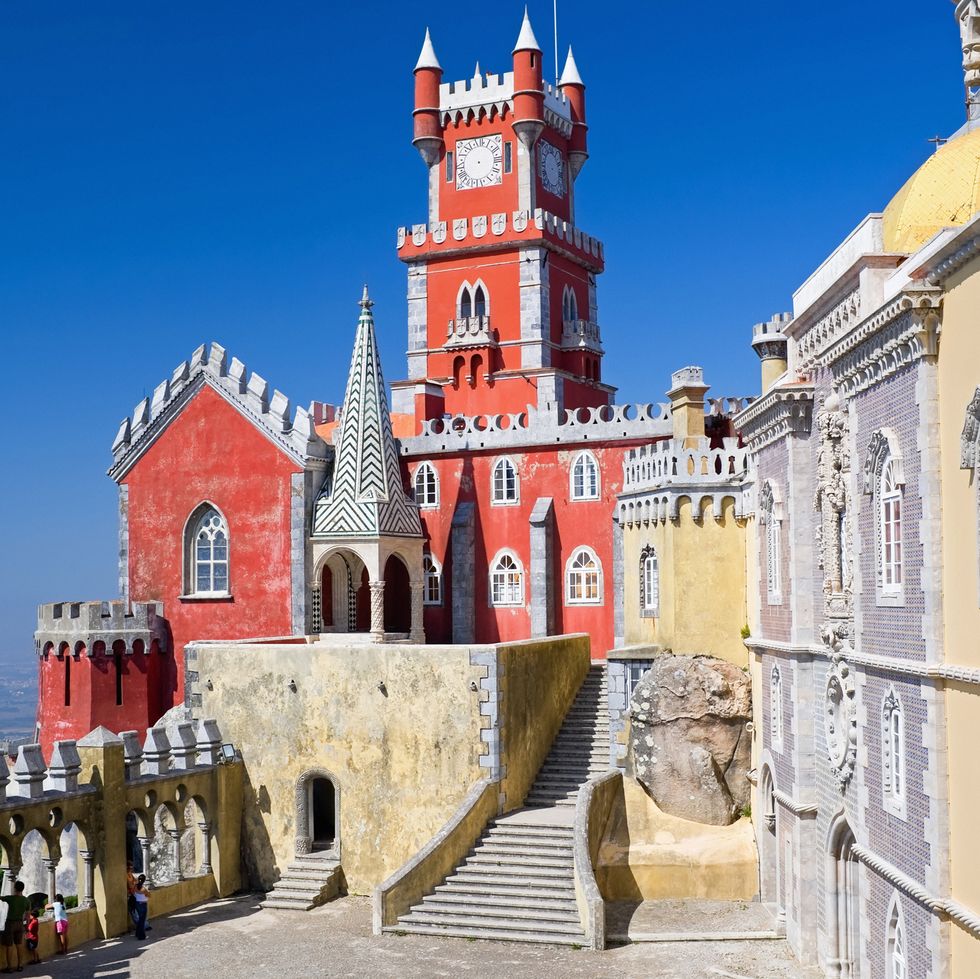
Influenced by Middle Eastern and European Baroque styles, the Pena National Palace represents the eccentric and colorful flair of 19th-century Romanticism in Portugal. King Ferdinand II designed the castle on a hill in the Sintra Mountains to be a summer home for the Portuguese royal family.
The vibrant shades decorating the façade indicate the palace’s sections such as a red clock tower and restored convent and a yellow new palace. The palace was frequently used by the royal family until the revolution of 1910 when the Portuguese monarchy was overthrown.
After years of disrepair, the castle was finally restored later in the 20th century and is now classified as a UNESCO World Heritage site as part of the cultural landscape of Sintra. Today, guests can trek up the castle's lush, hilly landscape to explore the various architectural styles that make up the Pena National Palace.
Neuschwanstein Castle in Schwangau, Germany
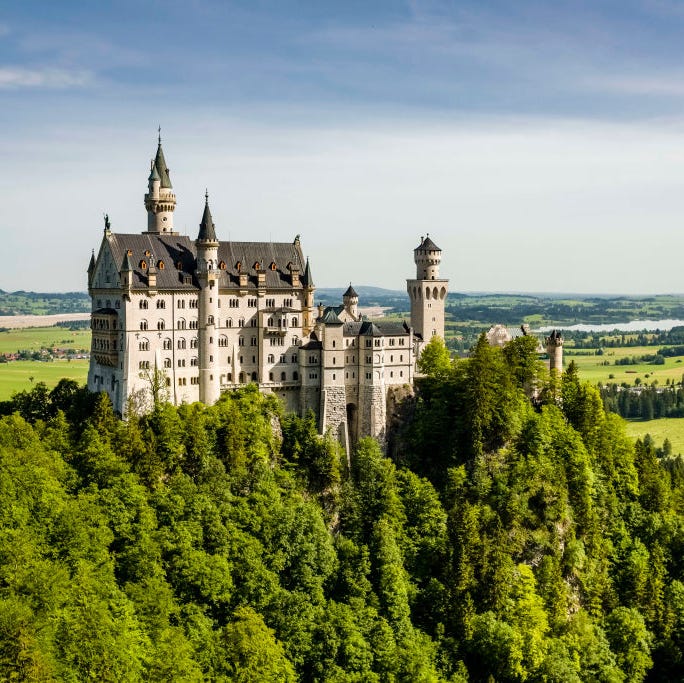
King Ludwig II of Bavaria commissioned Neuschwanstein Castle in 1868 as an escape from the public eye and political turbulence. After Prussia conquered Austria and Bavaria during the Austro-Prussian War, Ludwig was effectively stripped of his powers but still yearned for a kingdom of his own to rule.
In a letter to his longtime friend German composer Richard Wagner, Ludwig wrote about his vision for Neuschwanstein: "There will be several cosy, habitable guest rooms with a splendid view of the noble Säuling, the mountains of Tyrol and far across the plain; you know the revered guest I would like to accommodate there.”
While Ludwig never got to see Neuschwanstein in its finished state, “the castle of the fairy-tale king” opened to the public in 1886 and remains one of the most popular in all Europe.
Castel del Monte in Andria, Italy
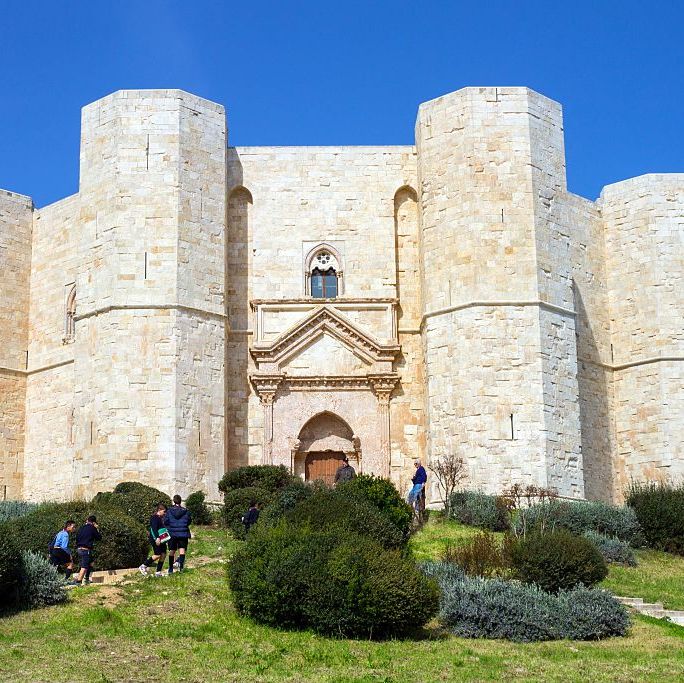
Much mystery surrounds the Castel del Monte and its purpose for being built. Holy Roman Emperor Frederick II ordered the construction of the citadel in 1240 in a rather remote area of southern Italy with no means of protection. After it was built, the decorated emperor soon abandoned the castle, leaving many questions surrounding his intentions.
Revered as a masterpiece of medieval architecture, the fortress’s layout consists of an octagonal base and tower at each corner and eight trapezoidal rooms on each of the two floors. It’s thought the geometric layout may have a deeper symbolic meaning with references to the Holy Grail and the relationship between humanity and God.
No matter its original purpose, the octagonal castle has become one of southern Italy’s most visited landmarks and is recognized as a UNESCO World Heritage site.
Frederiksborg Castle in Hillerød, Denmark

Located on three small isles on the Castle Lake, the distinguished Frederiksborg Castle was built as a symbol of King Christian IV’s power as ruler of Denmark and Norway. The Renaissance castle was a royal residence for 100 years before a major fire in 1859.
With only the chapel and the audience chamber surviving the flames, a nationwide lottery and collection were held to raise funds to rebuild the palace. After the royal family decided it would no longer stay at the castle, Frederiksborg reopened in 1878 as the Museum of National History.
Today, the world-renowned museum illustrates the history of Denmark through its impressive collection of portraits and historic paintings and the interiors of the castle.
Windsor Castle in Windsor, England
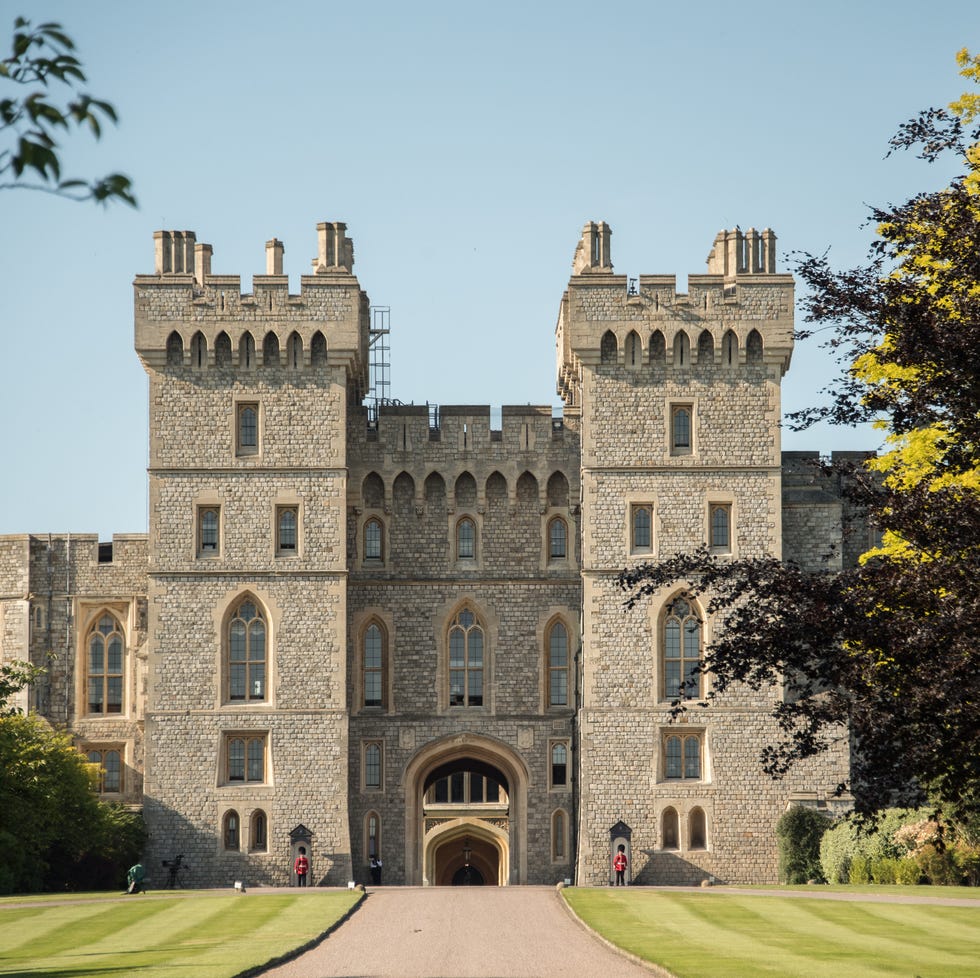
The oldest and largest inhabited castle in the world, Windsor Castle has acted as an official royal residence for more than 900 years. William the Conqueror began building Windsor around 1070 as both a residence and a fortress to guard the western approach to London.
The castle has seen many renovations from the countless monarchs who have lived on the property, including Queen Victoria, who added a private chapel. In 1992, a fire ravaged the chapel, along with more than 100 rooms that were destroyed. Windsor was fully restored to its original state five years later.
The property remains a favorite within the royal family with many weddings being held at the ground's famous St. George’s Chapel. Queen Elizabeth and Prince Philip often escaped to the quiet palace for restful weekends. The queen has spent much of her time at the castle since April 2021, when her husband died and was buried there.
Edinburgh Castle in Edinburgh, Scotland
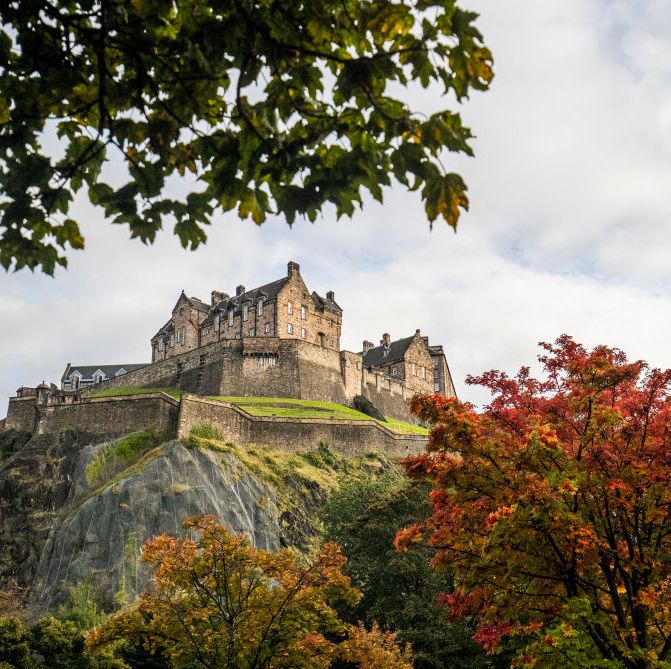
Standing tall on the crags of Castle Rock, Edinburgh Castle exudes a sense of authority and nobility throughout Scotland’s capital. Archaeologists believe humans have occupied the castle’s site since the Iron Age, but its royal ties can be traced back to only the 12th century when King David I built St. Margaret’s Chapel in honor of his mother.
Throughout the centuries, members of the monarchy reimagined the royal palace as a residence and military fortress. A notable decorative element remains above the door of the palace—the gilded initials “MAH,” for Mary, Queen of Scots, and her second husband, Henry Stewart, Lord Darnley.
After the Union of the Crowns in 1603, Edinburgh Castle was reserved as a military base. Today, guests are welcome to explore the various buildings and ancient artifacts of the Scottish monarchy like the Stone of Destiny.
Himeji Castle in Himeji, Japan
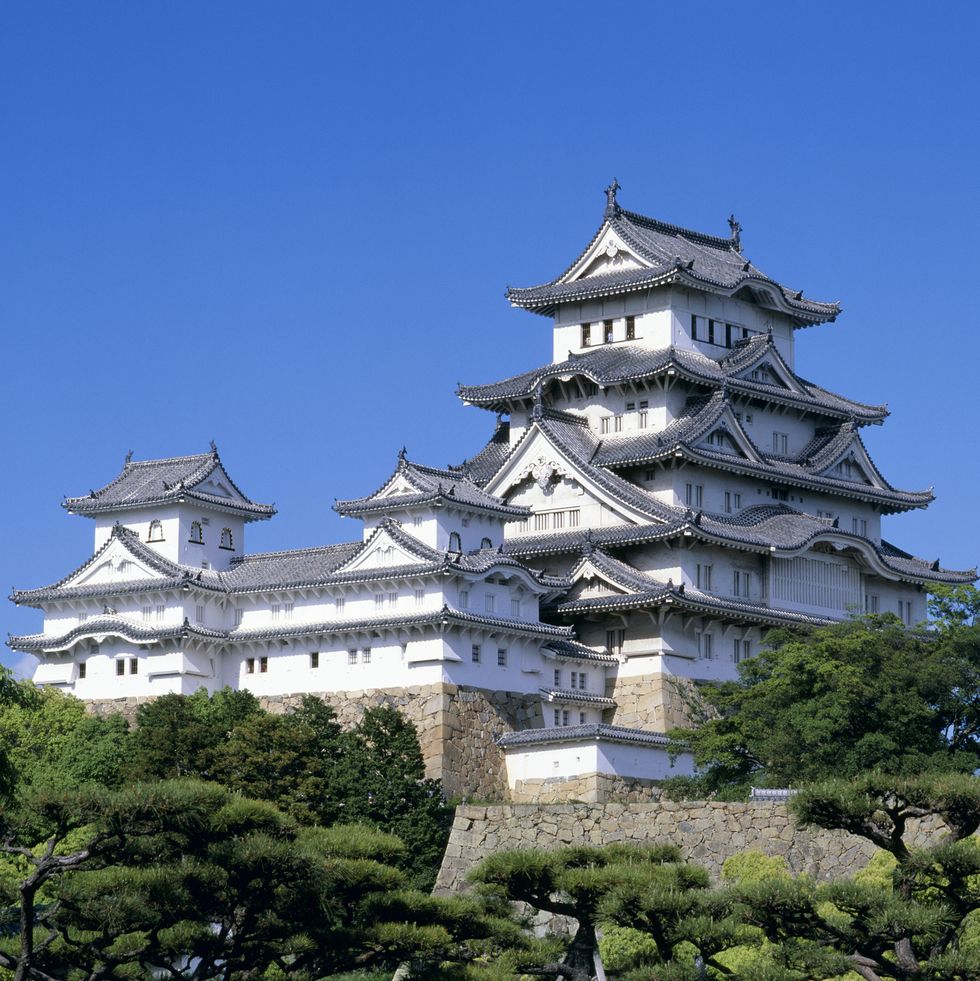
Its elegant white façade and jaw-dropping early 17th-century Japanese castle architecture have earned Himeji Castle the nickname “White Heron Castle” for its resemblance to a bird taking flight.
Originally built in 1346 as a fortress against local shoguns, the complex above the Inland Sea comprises 83 buildings with specialized systems of defense and protection devices. However, Himeji Castle was never used in battle but instead repurposed as a more residential castle.
In 1931, the Japanese government designated the site a national treasure. Guided tours are offered in both Japanese and English of Himeji and its cherry blossom garden.
Vianden Castle in Vianden, Luxembourg
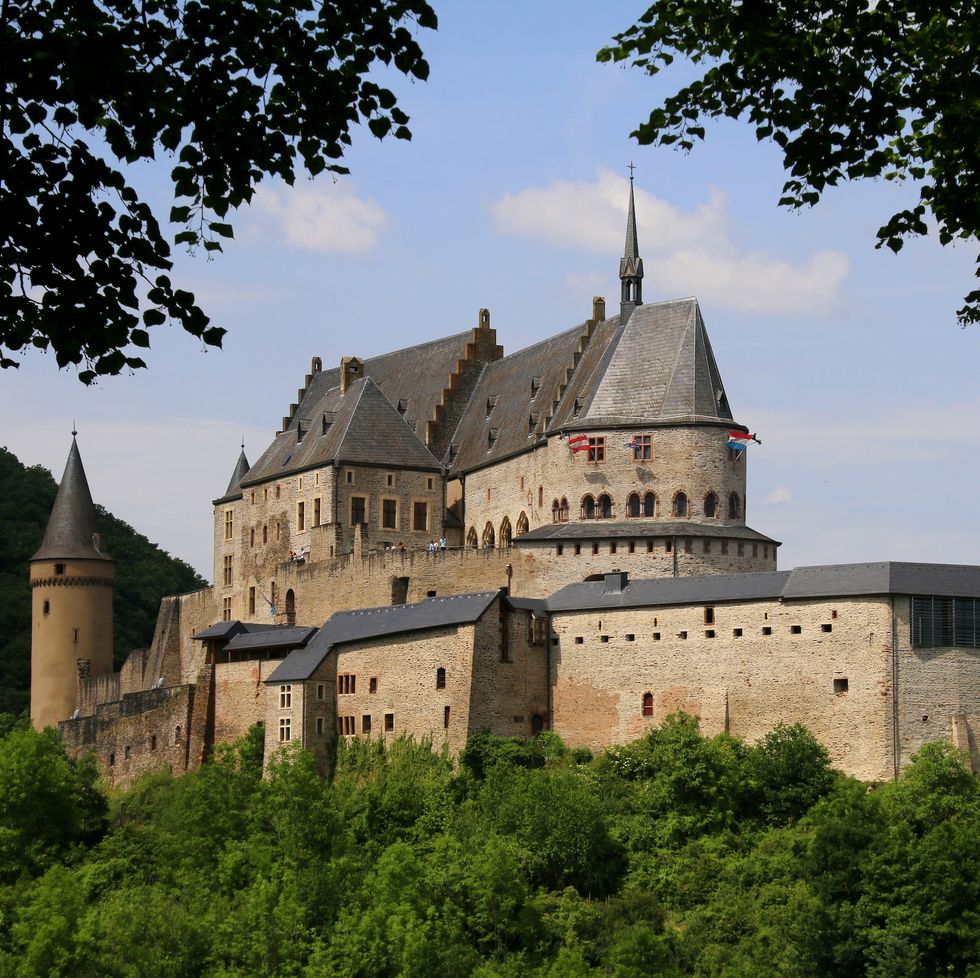
Overlooking the River Our in northern Luxembourg, Vianden Castle was first built on the site of an ancient Roman watchtower between the 11th and 14th centuries. It served as the royal residence of the count of Vianden until the beginning of the 15th century.
At the turn of the 16th century, the castle was left abandoned after a series of marriages and political actions combined the House of Vianden and the House of Nassau. Throughout the years, many kings and two locals attempted to restore the fallen castle. When the state finally gained ownership in 1977, it slowly began to be pieced back together.
By 1990, Vianden Castle had been restored as authentically as possible. It has since become a European treasure for people to explore.
Sarah DiMarco (she/her) is the associate editor at VERANDA, covering all things design, architecture, art, gardens, jewelry, travel, wine and spirits. She also manages social media for the brand.
Watch Next

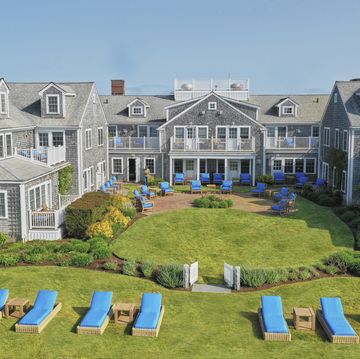
The 5 Best Nantucket Hotels

The 15 Best Hamptons Hotels
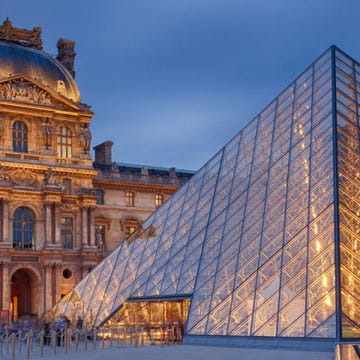
49 Museums You Need to Visit in Your Lifetime

The 8 Most Beautiful Gardens in France
